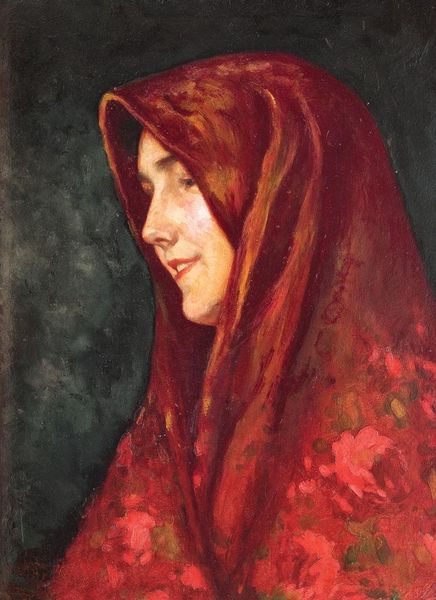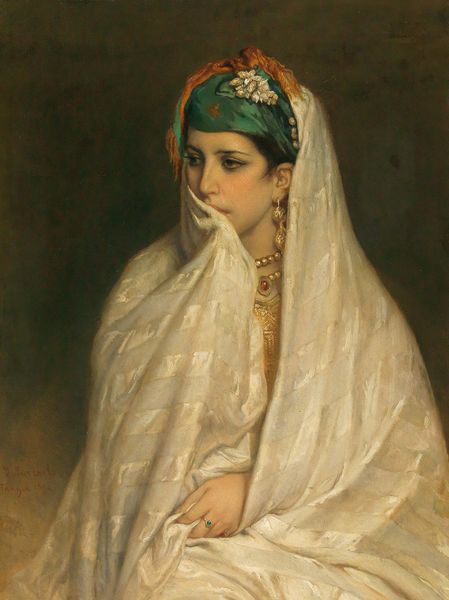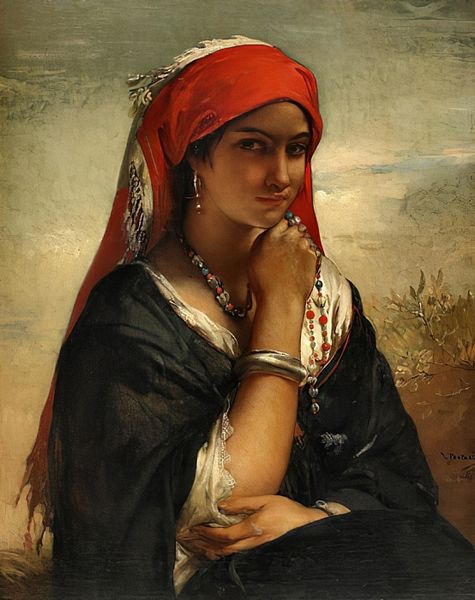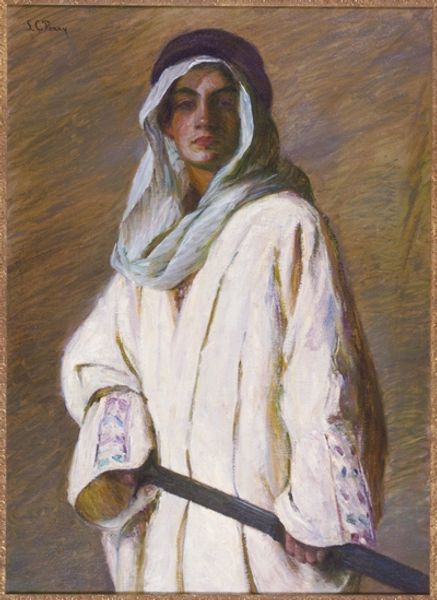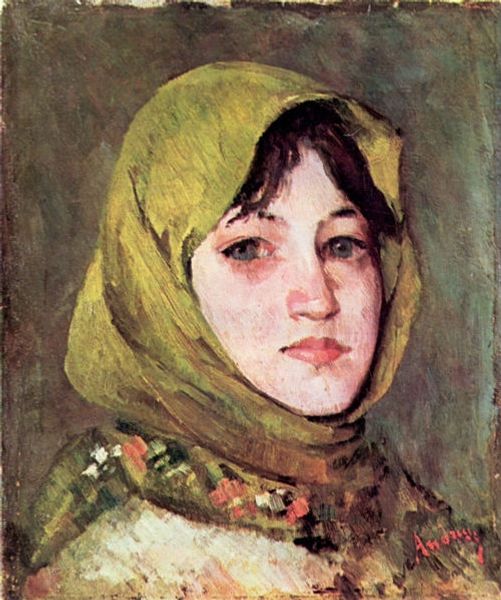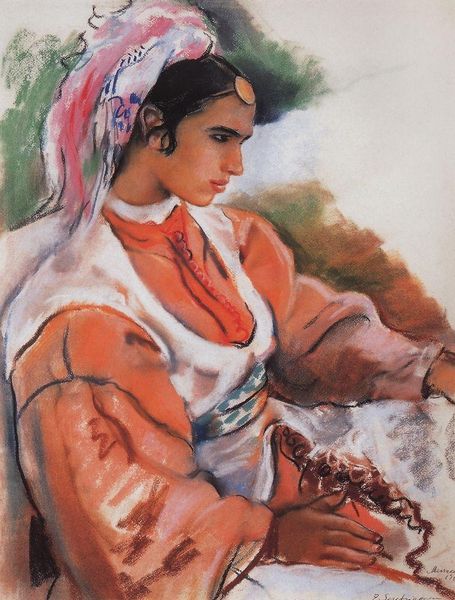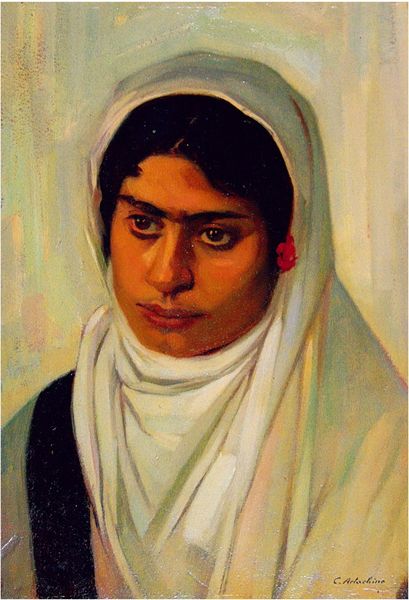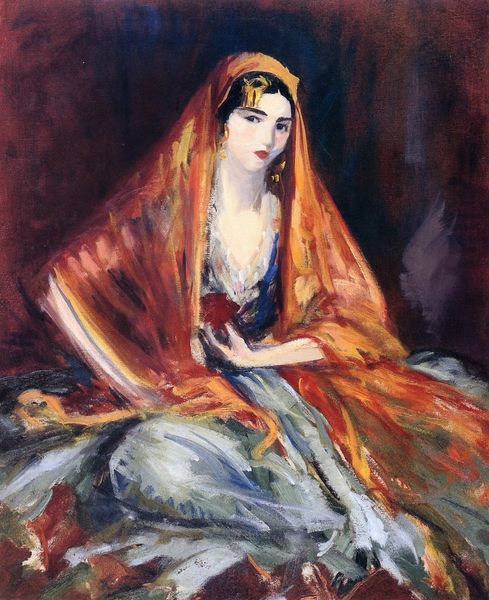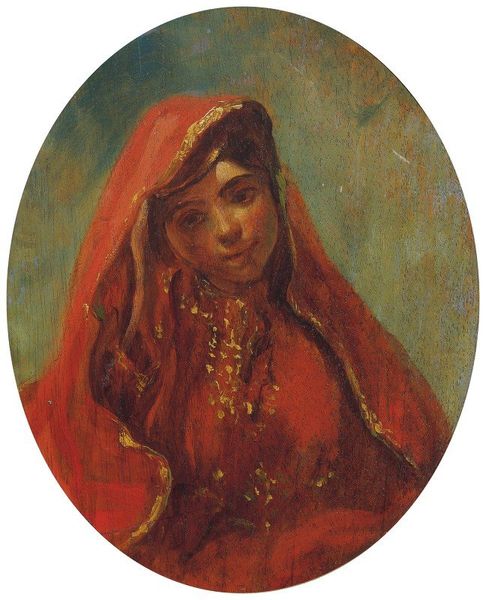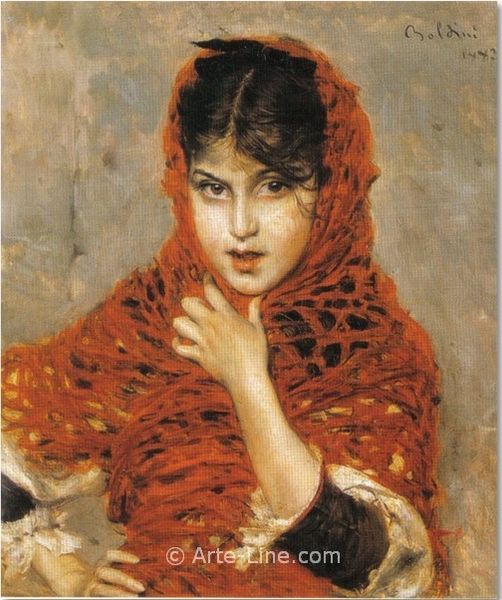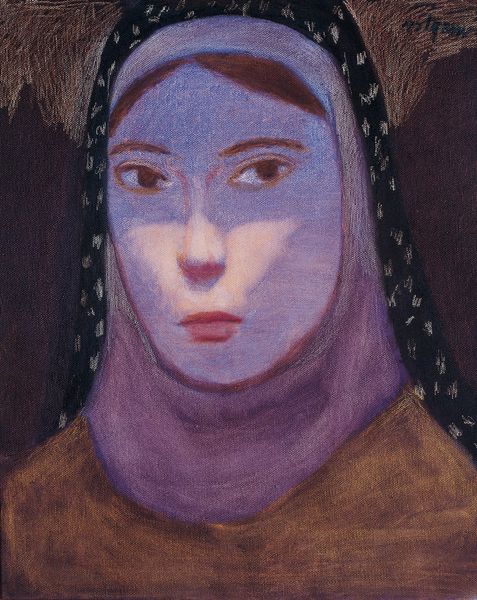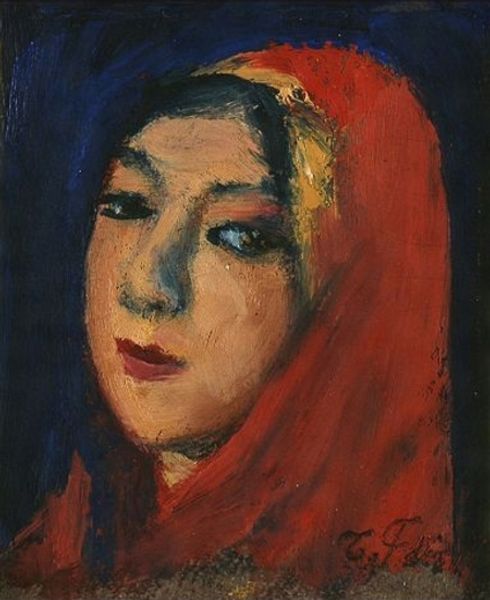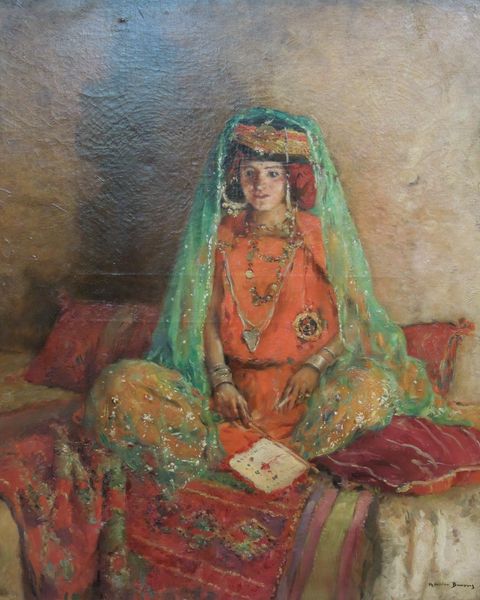
Copyright: Public domain
Curator: Up next, we have "Mexican Girl, Maria," painted in 1916 by Robert Henri, an intriguing figure in early 20th-century American art. Editor: It's quite striking. The dark background makes the girl's face and the floral shawl she's wearing practically glow. I’m immediately drawn to the texture of the fabric; I want to know what kind of weave, what type of cloth he's representing. Curator: Henri, part of the Ashcan School, championed Realism, particularly portraits of everyday people. There’s a very direct, unidealized gaze. In portraying "Maria," he seems to be engaging with broader themes of cultural representation, particularly America’s evolving relationship with its southern neighbor in the early 20th Century. Editor: Yes, the Realist style is evident, and those earthy colors… there’s a palpable weight to the oil paint, suggesting the hand of the artist and the physical process of applying it to the canvas. Is she a local artisan, perhaps? The shawl has the look of something handcrafted. Curator: It's believed Henri traveled to Mexico around this time and painted several portraits of the local people he encountered. He was actively rejecting academic traditions. These portraits often carried undertones of social commentary and were challenging established aesthetic hierarchies. He saw beauty and value in people often overlooked by the art establishment. Editor: So, even in the seeming simplicity of the composition, we're seeing an implicit commentary on value and labor? The texture tells part of that story—did he intend for the visible brushstrokes to stand as evidence of the artist’s own labor alongside that of the garment maker? Curator: Possibly. Henri wanted to capture the spirit and essence of his subjects. How successful he was, given the historical context of American artistic representations of Mexicans at the time, is open to interpretation. Editor: That tension between artistic intention and socio-political reality is powerful. I'm struck by the quiet dignity Henri has given to Maria; he seems to be pushing against prevailing attitudes of the time. Curator: The work encourages us to consider who gets to be represented in art and the social forces influencing those representations. It speaks to a very particular moment in US-Mexico relations. Editor: It’s fascinating how this portrait invites so many questions about artistic integrity, labor, and representation simply by the artist's approach to materials and the sitter's gaze. Curator: Precisely. There’s always so much more to art than meets the eye.
Comments
No comments
Be the first to comment and join the conversation on the ultimate creative platform.
